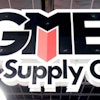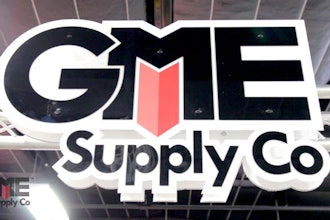Many industrial distributors find themselves in a constant push-pull between keeping up with changes in supplier products and pricing, maintaining customer relationships, and managing their own profitability. In our latest survey, Industrial Distribution readers discuss internal pricing strategies, the supplier pricing squeeze, and how tensions with customers have caused them to have to work harder to retain existing business.
Tension is certainly not an easy sentiment to quantify, but it’s a word we hear regularly from our readers nonetheless. And unfortunately, distributors are victims of this tension from both a purchasing and a selling standpoint, creating an environment where retaining an information, balanced business strategy is nothing short of a miracle. It was with this in mind that we tried to get at just how industrial distributors were managing their place in the supply chain — the middle; a tough place to be when the ground beneath the global economy could shift without warning.
Profitability
It seemed impossible to hash out the details on distributor pricing strategies without getting into changes to distributors’ profit margins, which is why we kicked off with these points.
The good news is that profit margins seem to be increasing for most of you. In fact, fewer than 20 percent of our survey respondents cited a dip, and for a majority of those folks it was less than 10 percent. The more interesting findings had to do with improvement of these profit margins, an area where levels of frustration seemed to increase.
Despite what appears to have been a good year for most, over 80 percent of survey respondents anticipate changes in their profit margins in the coming years. While 48 percent foresee improvement, 34 percent anticipate tighter margins down the road. Reasons for negative outlook may result from the uncertainty many business owners encounter when trying to forecast through an election year, as well as factoring in potential changes in health care and labor costs that could impact profit margins.
While most readers cited better expense control and increasing prices as the methods they planned to use to improve profit margins, not everyone was staying within the lines.
Write-in answers ranged from typical business streamlining tactics (less discounting and better sourcing/negotiating) to heftier undertakings like implementing pricing analytics or diversifying into lower commoditized products.
Still other survey respondents gave us the written equivalent of throwing their hands up. “We’ve laid off the rest of our employees,” one said. Another reader’s solution was, simply, “a witch doctor.” These frustrations can be all too common for businesses dealing with raw material price fluctuations, with copper and steel cited overwhelmingly as the cause for the majority of the stress. In fact, 58 percent of our survey respondents said that raw material price increases have affected their profit margins in the past year, with resins, plastics, cotton, rubber, and oil & gas also identified as problem areas.
Another interesting takeaway from our results highlighted the effects tight margins are having on some distributors’ ability to participate in global markets. With transportation and inventory costs weighing on the value proposition of most BRIC nations, 32 percent of our readers surveyed say their ability to source products from overseas has been compromised by slim margins.
Supplier Pricing
If there is one consistent element in an inconsistent market, its supplier price increases. The question here is not if prices from suppliers were increasing (this much has been obvious), however what is being done to remedy to the costs. For an overwhelming majority of our survey respondents, price increases were being passed along down the chain to the customer base. Permitted to “check all that apply,” 34 percent of survey takers also cited negotiation tactics as a way of buffering purchasing price issues so they were no longer significant. In addition, 33 percent said their company has also responded by absorbing these price increases themselves. While this strategy certainly stretches already tight margins, it could be the only way for some to weather out the swings while retaining key customers (see graph below).
One respondent told us that, instead of employing any of the above methods, they’ve turned to private label products so they can “control the market.” Another cited a strategy where the company increased their inventory levels on specific products before the price increased.
Distributor Pricing and Customer Relationships
Price increases inevitably come from a few sources, with 68 percent of survey respondents citing raw material price increases as a driving force affecting their own company’s pricing.
And as we mentioned earlier, tight profit margins often force distributors to simply pass supplier increases on down to the customer since they lack the ability to absorb the swings. The most damaging effects here lie in the increasing tensions from a customer standpoint that come with price increases. 61 percent of survey takers said price fluctuations have created tension, while 9 percent said they weren’t sure. For those who saw more customer tension, a whopping 97 percent said the result has been doubling their efforts in order to retain this existing business. 21 percent said they also have been dropped by customers altogether based on these issues.
When it comes to pricing, the majority of readers use a formula to determine what to charge for their goods. An additional 18 percent said they track competitor pricing and try to stay at or below those numbers. What’s interesting here were the number of write-in responses we received when we asked about pricing strategies. It seems many distributors are increasingly taking a creative approach to this aspect of the business, likely trying to hedge against these aforementioned fluctuations while still keeping the customer happy. Some other interesting highlights:
• One told us that their pricing structure depends on the customers and “our level of support,” suggesting this distributor’s ability to charge, whether outright or through higher product line rates, for value added services.
• One respondent said “whatever the customer will accept,” suggesting some currently lack leverage in these business relationships. Another said he/she will “price based on what we feel will get us the business.”
• Another cited an attempt by his or her business to offer large quantity discounts to encourage customers to increase their own inventories. It’s arguable we may see more of this type of strategy as distributors try to unburden themselves of some of the increased carrying costs that fell to them during the worst of the recession years.
Evaluation
The survey results also pointed to an interesting trend towards increasing evaluation of supply chain partners — both on the supplier and customer side. According to our survey respondents, 41 percent evaluate their supplier base more than once per year, a figure that stands in stark contrast to those who say they “never” reevaluate their supplier base (5 percent). A large number – 33 percent – conduct this task about once per year, and 21 percent say “every few years” (see pie chart to the right).
Perhaps more interesting are the results to the question “How often do you evaluate your customer base?” For 17 percent of respondents, a customer is a customer and they can’t afford to lose any. But as their value propositions improve, another 17 percent say they reevaluate their customer base every few years. 19 percent say some customers are not worth the costs, and therefore they reevaluate once per year. Interestingly, 47 percent say they are constantly evaluating this area of their businesses. This trend perhaps indicates an evolving disconnect as distributors struggle to relay their value proposition to their customers, and customers continue to push the envelope in terms of their expectations. When inventory demands, services, and account management create more output than can be regained in customer spend, it could be time to cut some of these accounts loose—something many of our survey respondents say they’re not afraid to do.
So despite the fact that most are coming off a solid year of profitability, there is still much to be seen in terms of how this will be sustained, and how much the market will bear in terms of raw materials and finished goods price fluctuations. The good thing is that industrial distributors are getting creative, and it’s likely we’ll see more aggressive approaches to managing internal costs, especially relative to inventory issues, managing customer demands, and assessing the supplier and customer base on a regular basis in order to determine which holds true value, and which business relationships might be better off dissolved.
This survey was distributed via email to a list of Industrial Distribution subscribers. Respondents are C-level executives, purchasing, or sales/sales management professionals in North American distributorships. Feedback? Email the editor at [email protected].


















